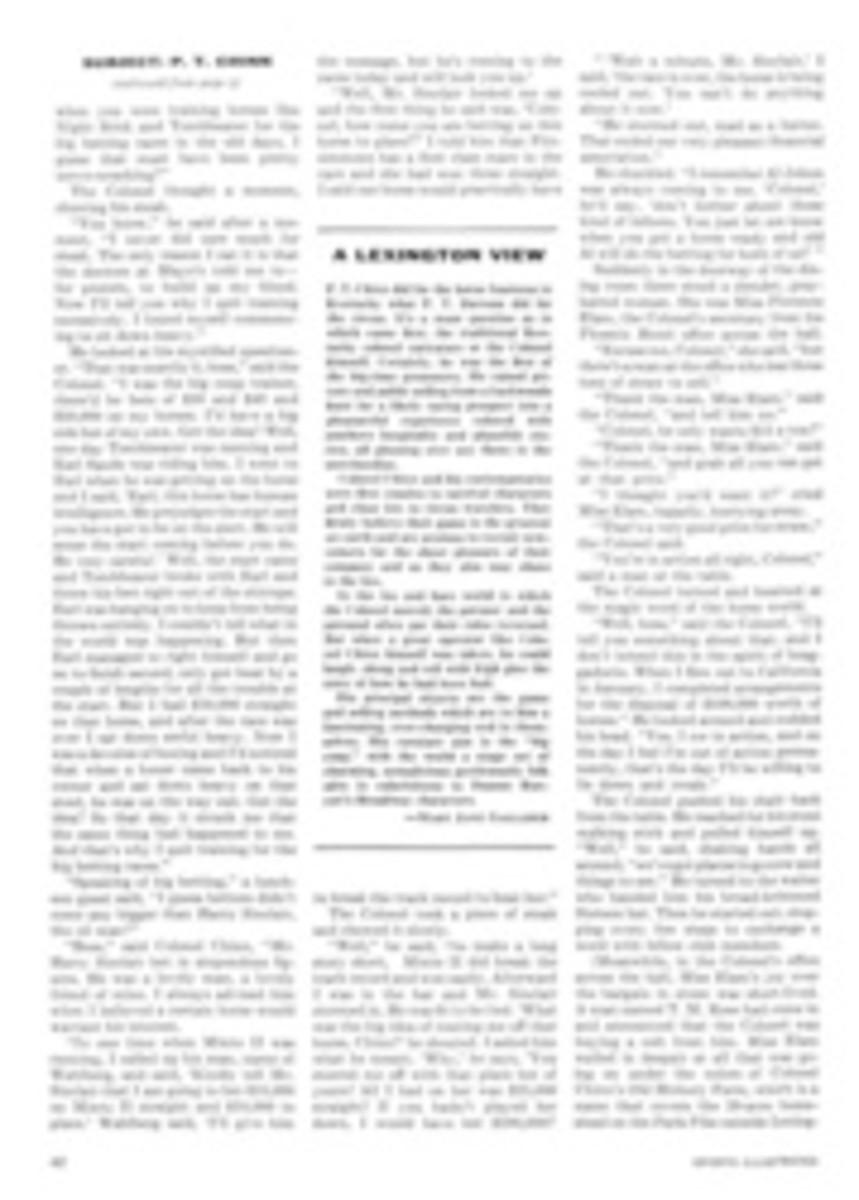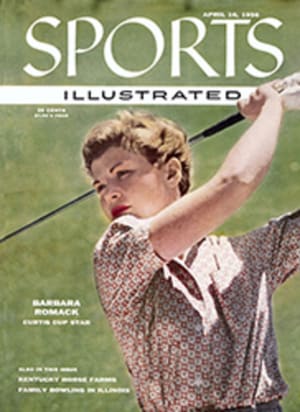
TENNIS TALK
In 1949 Tony Trabert was just a big, gawky boy of 19, fresh off the park clay courts of Cincinnati, who swung at a tennis ball like a woodsman wielding an ax. He wasn't good enough to rate the first 20 in United States rankings. He was 23rd.
The following spring Tony went on the European swing, winding up at Wimbledon. His game steadily sharpened on the anvil of international competition. The next year he ranked third nationally—a jump of 20 notches—and two years later, 1953, he was the best in the United States.
Pancho Gonzales, the lean, swarthy Californian, was ranked 17th in 1947. A year later he was national champion. Ellsworth Vines was not ranked in 1929. In 1930 he was No. 8, and in 1931 he was champion of the world.
I cite these examples to show that the arrival of the great tennis champion often is a sudden thing—a clumsy caterpillar in a cocoon today, a flashy butterfly tomorrow. We should remember these transitions—sometimes quick as an eye-flick—when we start despairing of our Davis Cup chances.
We have named a preliminary Davis Cup squad. It is a squad seasoned with veterans such as Vic Seixas, Art Larsen, Herbie Flam and Ham Richardson and sprinkled with enthusiasm of youngsters like Sam Giammalva, Barry MacKay, Earl Baumgardner and Ron Holmberg.
Properly trained and pushed into grim international play, any one of the kids might develop overnight into another Trabert, Gonzales or Vines. Giammalva came a long way during the last year. How do we know how much further he may be capable of going, given the chance? MacKay's progress has been encouraging. He could become a winner in a flash.
Some are criticizing the makeup of the Davis Cup squad because it includes such as Seixas, Larsen and Flam.
But we need all of this experience to get through the earlier rounds of the Davis Cup competition in order to reach the Challenge Round in Australia. It won't be easy and we'll need every bit of strength and savvy at our command. At the same time, I hope that some of the experience wears off on the youngsters and some of the kids' bubbling enthusiasm spills over on the oldtimers.
One factor is strongly in our favor. That is, we have adopted a more realistic attitude about the Davis Cup. We have organized the squad earlier than ever before in our history. We plan a month's "training" program—if not in this country, perhaps in Europe prior to the Wimbledon period. We may not be the best U.S. Davis Cup team ever fielded; at least we hope to be the best prepared.
GONZALES AGAIN
Meanwhile, the U.S. Lawn Tennis Association is trying to build up tennis interest with a $50,000-a-year public relations program. Results already are evident. Jack March, who ran the POC World Pro Tennis Championships at Cleveland, last week reported the biggest crowd ever recorded for the event.
The tournament was run under March's rather revolutionary and controversial rules. Scoring was on a 21-point-per-game basis as in table tennis—with no love-15 and 15-40 counts—and players were limited to one service.
Despite this handicap, Pancho Gonzales who along with Trabert bitterly denounced March's system, proved himself again the world's greatest tennis player by blasting Pancho Segura in the finals 21-15, 13-21, 21-14, 22-20. It was Gonzales' fourth straight pro championship. Trabert and Rex Hart-wig outlasted the two Panchos 18-21, 21-11, 21-14, 13-21, 23-21 for the tandem crown, proving the best in singles aren't always the best in doubles.
In the singles semifinals, Segura ousted the newest pro convert, Trabert. In Kramer's plan of things, this just about eliminates Tony from future tours. As Kramer put it, with real regret: "Here is Trabert, close to the best tennis player in the world, and there's not a place in tennis for him."

